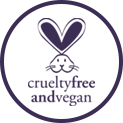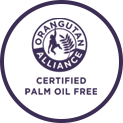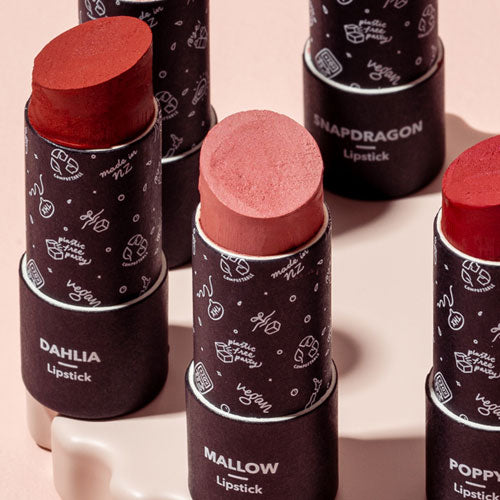“Pour yourself a drink, put on some lipstick, and pull yourself together.” – Elizabeth Taylor.
Lipstick has been around since the beginning of time. Once only thought fit for the lower class and ladies of the night - the high society of the Dark Ages that is. Lipstick was also used by Ancient Egyptians for sun protection and the dust of ground-up gemstones was worn as a lipstick by wealthy Ancient Mesopotamians. Fancy.
How far we have come. Thankfully.
But to think that the first-ever lip gloss only graced us with its presence in just 1930, with the arrival of the swivel up lipstick arriving in 1923. That doesn’t feel that long ago.
There are a lot of misconceptions out there about lipstick, and it is easy to see why. The cosmetics industry is booming, and lipstick has undergone somewhat of a revolution. From crushed gemstones and homemade concoctions to sheer and satin, glossy or matte, colour stains, nude shimmers, high shine and long-lasting frosts, tints, and primers - the list goes on.
So, it is no surprise that the internet is awash with lipstick myths and legends.
We have tackled some of the most popular questions asked online about lipstick and went deep into the research with the help of the women-led scientists on our Product Team. It was fascinating!
Is lipstick bad or harmful for your lips?
Lipstick has received a bit of a bad reputation in the past for having ‘nasty’ and ‘harmful’ ingredients, but it is an evolving industry that continues to improve. However, there are still some lipstick ingredients around that really shouldn’t be – such as lead, petroleum, coal tar, heavy metals, and aluminium. Lead might not be an actual ingredient but can show up as a contaminant, which is why it is not something you will find on a lipstick's ingredient list.
In a draft guideline issued in 2016, the FDA assessed that the potential harm to consumers from use of lipsticks that contained trace quantities of lead found in the 685 lip cosmetic products they tested was not to be of safety concern, as lipsticks are intended for topical use with limited absorption and ingestion.
Even so, regardless of whether you are an occasional or frequent wearer of lipstick with these ingredients, our stance is that lipsticks should not ever contain lead or heavy metal contaminants. Why risk it when they can be avoided altogether with safe alternatives?
Is eating lipstick harmful?
Well, let's quantify eating. When we wear lipstick, we will naturally ingest some of it as the day goes on through eating, drinking, and talking. That is far different from slicing up and popping up a piece in our smoothie.
One of our favourite sayings is "the dose makes the poison”, and this is no different - but it still pays to be informed and know what ingredients are in the products we use.
A certified vegan, cruelty-free lipstick product that has total transparency in its ingredients list won’t have harmful ingredients such as heavy metals or contaminants like lead. So, choose your cosmetics brands wisely.
Can lipstick cause cold sores?
In short, no. Cold sores come from the herpes simplex virus and can be triggered by a multitude of things such as stress, changes in climate, diet, and a weak immune system. But if you share lipstick with someone who already has the virus, they can pass it back to you this way. This doesn't mean that you will automatically get a cold sore. The virus may need some other trigger to make a cold sore appear. So sharing isn’t always caring when it comes to lipsticks or any other lip care products!
Do lipsticks expire?
Most lipstick brands can last 2-5 years on the shelf, unopened. Once they are opened, their life span starts to tick over towards their expiration date or their best period after opening date. But how long your lipstick lasts will depend heavily on your favourite brand and what they recommend so it’s best to check directly with them.
Our lipsticks have a period after opening (PAO) of 12 months, which means that once you have opened them, we recommend using them within 12 months. Like all of our products, they have been safety and stability tested in Europe and have a shelf life of at least 36 months. However, we recommend using them up within the PAO duration to ensure you get the best experience with the product.

Are all Ethique lipsticks natural and toxic-free?
Natural, non-toxic and toxic-free. Just some of the most popular eco-friendly buzzwords used to sell us products. Unfortunately, buzzwords are just all they are. Terms that are unregulated and unsubstantiated are used to sell us all kinds of products, from cosmetics to beauty products, craft materials and more. The reality is that just because something is natural, doesn’t mean it is better. In fact, some of the most harmful chemicals for humans, botulinum toxin and tetanospasmin, are naturally occurring.
If the brand using the buzzwords can’t back up their claims, your greenwashing red flags should be going up. Greenwashing is unfortunately a huge part of marketing culture and whether we like it or not, we are all unwittingly on the receiving end of it.
All our products, without exception, are made from ethically sourced, sustainable ingredients through our direct trade partnerships. We have absolute transparency around our ingredients, so you never have to guess what they are or where they came from. In fact, you can select any ingredients listed on our product pages to find out more or email our team via hello@ethique.com if you have any specific questions.
We carefully select all our ingredients to create bars that are safe for you, your family, pets and of course, the environment. Our ingredients must fit four criteria:
 |
 |
 |
 |
| they must not have any health risks associated with their use* | they must be sustainably produced and biodegradable | they must be cruelty free and plant-based | they must be free from palm oil and palm oil derivatives |
* When used in the expected concentration in a cosmetic product. Even water is harmful when you have too much of it!
Are all lipstick tubes recyclable?
Only 7% of all plastic ever made has ever been recycled, so chances are that even if it is plastic packaging, that can be recycled, it, unfortunately, won’t. To eliminate any doubt about where packaging might end up, we’ve created our plastic-free lipstick range packaged in home-compostable cardboard packaging so you can pop it in your compost or garden to break down once you’re done. If you don’t own a compost or have access to a garden, you can also recycle the tubes in accordance with your local recycling guidelines.

Is lipstick considered a liquid when you are travelling? Is it TSA approved?
While lipsticks are not considered a liquid when travelling, different airlines may have different rules. Lipsticks are allowed to go in carry on and booked in luggage, but according to the TSA website at the time of writing, the final decision will fall with the TSA officer on the day 🤷♀️.
Is lipstick poisonous or toxic to cats or dogs?
Modern-day lipstick brands that are safe for humans are more than likely not going to cause sudden death to a beloved pet if accidentally ingested. Dogs and cats have different skin sensitives to humans and while we strongly advise not to apply make-up like lipstick to your pets, they will more than likely survive accidental ingestion. Speak to your vet immediately if you are concerned.
Is lipstick vegan?
Not all lipstick is vegan, and you can’t be 100% certain unless the brands are certified vegan – a cruelty-free certification is not enough. Lanolin (oily wax secretion from the sebaceous glands of woolly animals like sheep) is a very popular ingredient in many beauty products like lipstick, as is beeswax. Red pigments used in lipstick and other cosmetic products often come from the crushed bodies of the carmine beetle - you might see that ingredient in your lipstick as cochineal extract, Red 2 or Red 40, or E120.
Vegan is another buzzword that is largely unregulated, so a bit of research into brands to verify their claims through resources like Leaping Bunny, Ethical Elephant, SAFE NZ and Cruelty-Free Kitty can help you make an informed choice.
We would love to hear from you with the questions that you have about lipstick! Email us with your questions and our team will get you the answers you are looking for.
Shop our lipstick range today! 7 Beautiful shades of certified vegan, cruelty-free, palm oil-free and plastic free lipstick in home compostable packaging.





